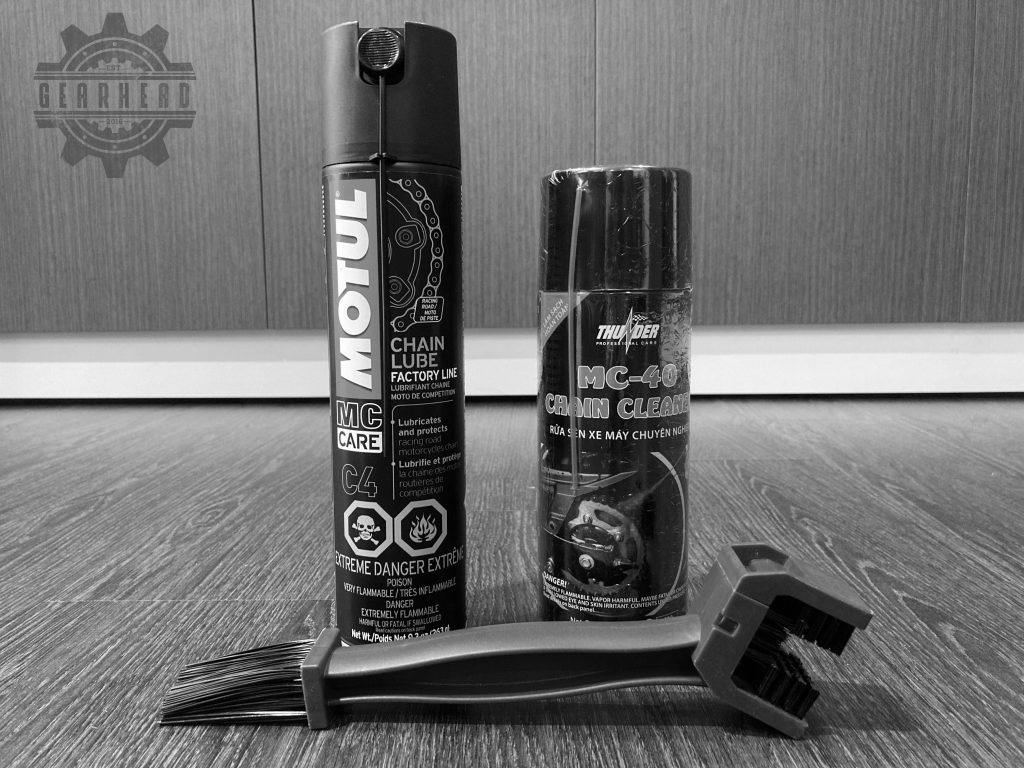This write-up focuses on motorcycle drive chain maintenance. I didn’t intend to write about this, but I was shocked to see my drive chain fail so early… I have owned this 2021 Versys-X for barely a year now and only clocked about 9,000 km. Yet, the chain decided to give up the ghost.
On my previous Versys, the chain lasted more or less 25,000 km (as you can read here). In case you’re wondering, Kawasaki seems to fit the exact same chain on every Versys-X assembled in Thailand since 2017. This got me thinking: why did it fail so early?
Chain maintenance
Before I go any further, a quick word on how I maintained this particular chain: I tried to stick to the recommended 500-km service interval and used the following tools and products:
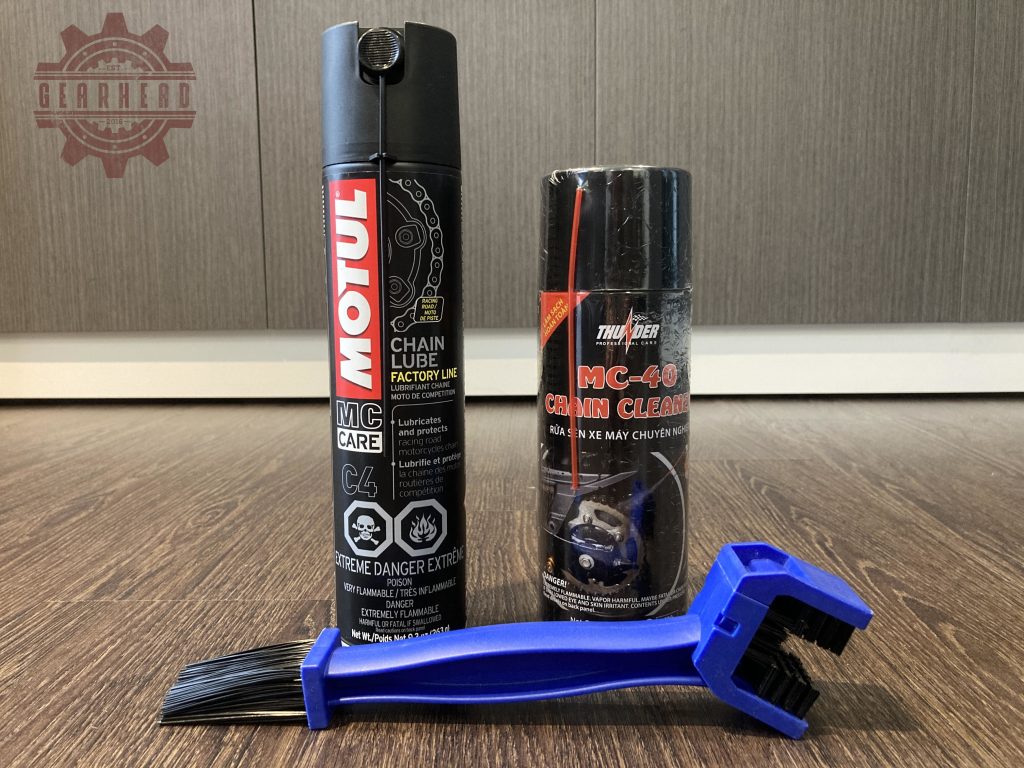
As for chain slack, I like to keep it on the loose side with about 40mm of slack (Kawasaki typically recommends 25-35mm). I’d rather be on the safe side by having a chain that is slightly too loose, as a tight chain can potentially cause much more damage.
The “oh-so-common” O-ring Failure
I knew my chain was on its way out when the incessant creaking and squeaking would persist even after cleaning and lubing. I broke out my chain tool and removed the chain. Here’s what I found upon closer inspection:
- minor play in the bushes and pins throughout the chain
- 17 missing O-rings
- 11 tight spots
- lots of chain lube build-up (C4 is sticky stuff)
I found out that the squeaking noise originated from corrosion inside the bushes. Strangely enough, this was even happening in links with no missing O-rings. I can only assume that some O-rings did not seal properly. This eventually led the grease to either dry up or leak out. This would also explain the tight spots.
Below is a section of the chain with 3 missing O-rings.
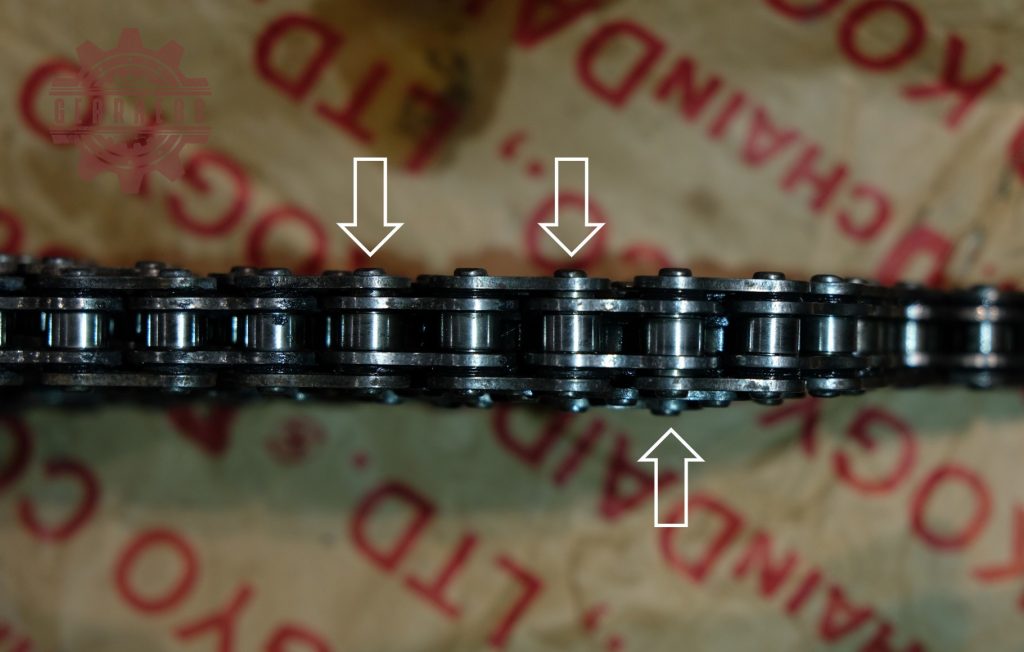
I found 3 of the missing O-rings trapped in a gooey mess inside the counter sprocket cover (a testament to my religious chain maintenance or -more likely- profuse lubing).
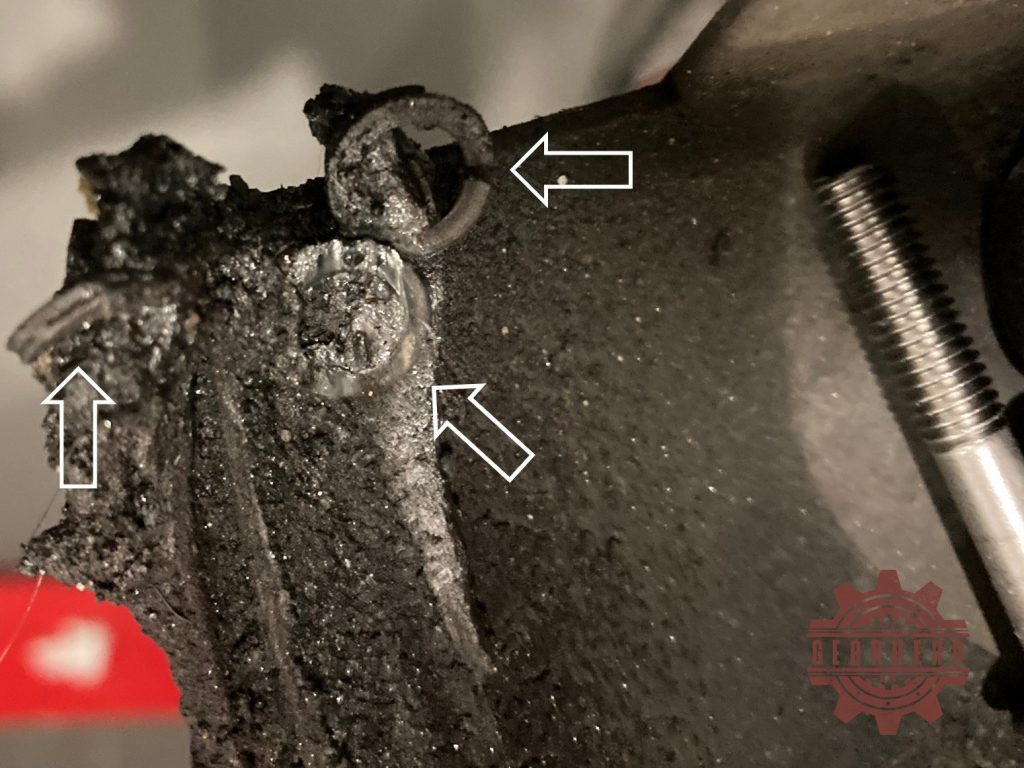
Below is an intact O-ring taken from the chain (right).
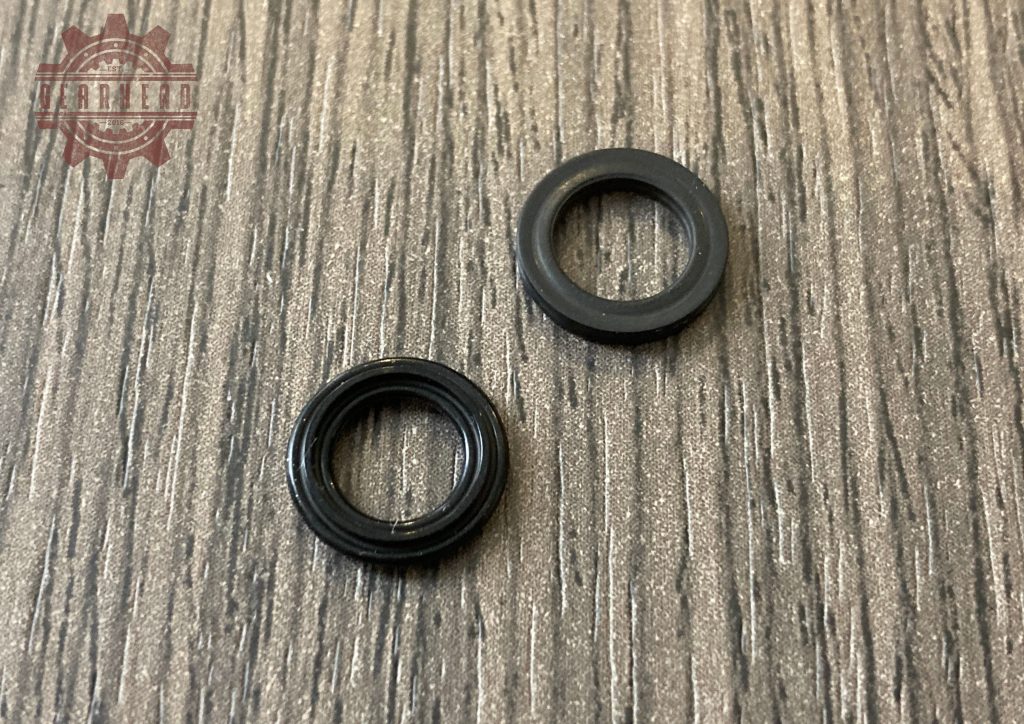
Chain maintenance revisited
What follows is entirely based on my own experience, so take it with a grain of salt. When it comes to chain maintenance, what I believe is important is…
- … how you clean
Every single time, I would cover the chain profusely in chain cleaner, wipe it down with a rag, spray it down again and then give it a good brush. Now, the bristles on these chain brushes are far from soft. So, the repeated brushing may have damaged the O-rings, causing a premature chain wear.
- … how you lube
Compared to conventional chains, sealed chains do not need nearly as much lube. On a sealed chain, you only lube the rollers and the rubber rings. The rest is lubed from the factory and sealed by the rings. I believe I was overapplying chain lube. This is what caused excessive lube build-up on this chain. My hypothesis is that it can potentially damage the rings depending on the lube you use. Which brings me to the next point…
- … what lube you use
I am currently using Motul C4, as a replacement for some generic stuff I used previously. The generic lube would go everywhere, except where it was supposed to be… Now, Motul C4 is the exact opposite. It’s super sticky and while it keeps the rest of the bike clean, it’s also a pain to clean. Road grime will cling to it as if there were no tomorrow. So, this might also not be the right lube for me.
Motul describes C4 as “White coloured lubricant for racing motorcycle chains: Speed and Endurance. Based on solid additives AW/EP.” It makes sense that C4 is very sticky, as it is designed for racing applications. And this is why it is less than ideal for everyday road conditions. Personally, I feel that C3 is the best choice for me, but I have yet to find it in Vietnam. C2, however, is widely available. You can find more info on Motul’s chain lubes here.
So, it only makes sense to change my ways by…
- … thoroughly cleaning only when needed
Stick to the 500km interval. Start with a good wipedown first. Only use the chain brush for cleaning when needed.
- … applying just enough lube
Apply just enough lube to lubricate the rollers and rings.
- … switching to an appropriate lube
Switch to Motul C2 or C3 and see how that goes.
I hope you enjoyed this write-up. Feel free to comment below and share your own tips on drive chain maintenance!
Update (02/2024)
After having written this post, I switched from Motul C4 to C2. Here is my experience.
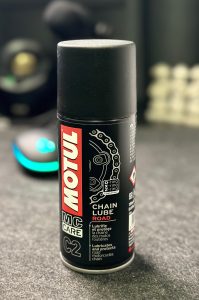
I acquired a Versys 650 in March 2023. I have been cleaning and lubing the chain every 500 km, with Motul C2, for over 14,000 km now. To my surprise, I recently noticed that some of the links in the DID chain have started to bind…
So, Motul C4 was a super-gooey white-colored chain lube. This stuff sticks to the chain like a koala clinging to a eucalyptus tree! It keeps your wheel and the rest of the bike clean. However, it also left a lot of residue around the countersprocket (as pictured above). I thought Motul C2 would be a different but it’s pretty much the same. It’s also very stick except it’s translucide.
I think the issue is the extra effort required when cleaning the chain. These lubes are so sticky, you spend twice as long to clean all the residue. Whatever residue is left may cause the links to bind. At least, that’s what I think.
What’s your opinion?
